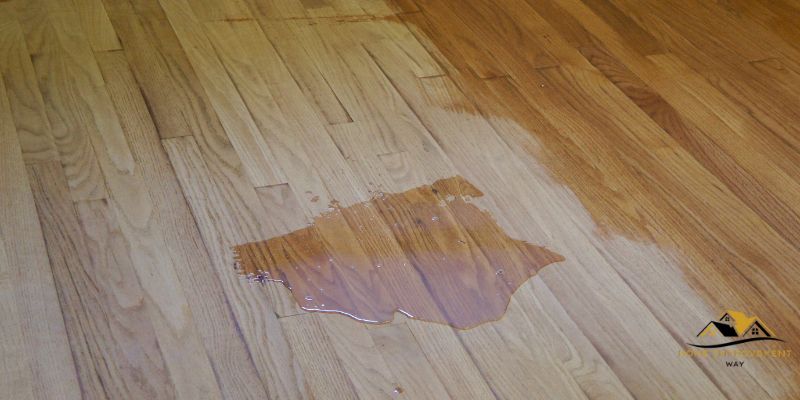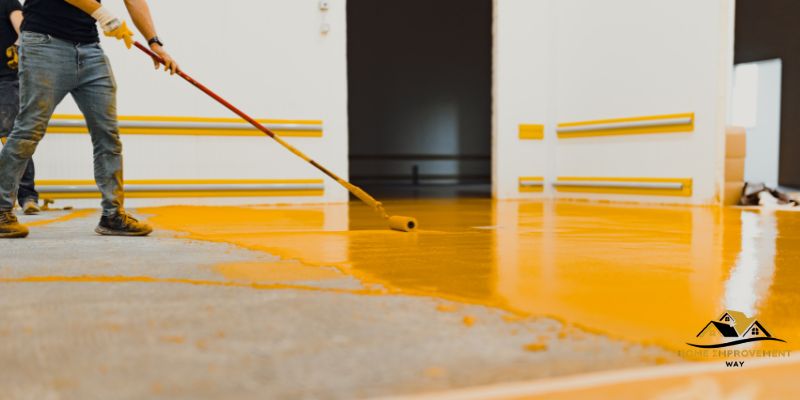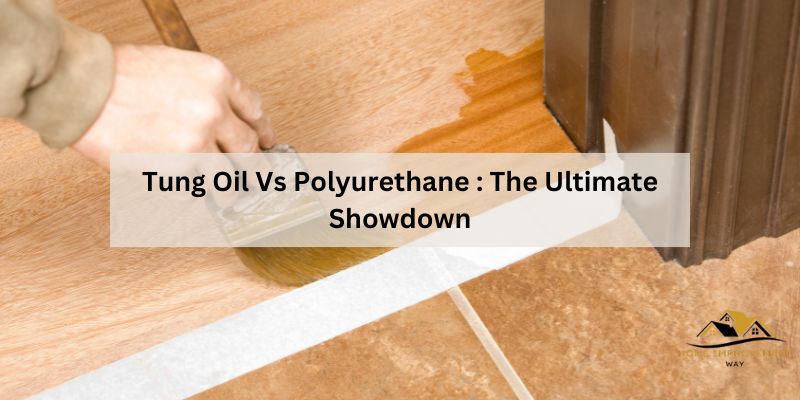Tung oil and polyurethane are both types of wood finishes, with Tung oil being a natural, traditional finish and polyurethane being a synthetic, durable finish. Tung oil provides a more natural, matte finish and requires regular maintenance, while polyurethane offers a tough, glossy finish that requires less maintenance and is more resistant to wear and tear.
When deciding between Tung oil and polyurethane for finishing wood, it’s important to consider factors such as the desired look, level of maintenance, and durability needed for the specific project. Both finishes have their own unique benefits and drawbacks, so understanding their characteristics will help in making an informed decision for the best wood finish for your project.
Benefits Of Tung Oil
One of the key benefits of Tung oil is its natural and environmentally friendly characteristics. Tung oil is derived from the seeds of the Tung tree, making it a renewable and sustainable resource. Unlike synthetic finishes, Tung oil does not contain harsh chemicals, solvents, or VOCs, making it a safe and eco-friendly choice for wood finishing.
Another advantage of Tung oil is its ability to enhance the natural beauty of wood. When applied, Tung oil penetrates the wood fibers, accentuating the grain patterns and colors, resulting in a rich, warm finish. This natural enhancement provides a timeless and elegant look to the wood, bringing out its inherent characteristics.

Limitations Of Tung Oil
When it comes to choosing a protective finish for your wood projects, Tung Oil and Polyurethane are two popular options. While Tung Oil is known for its natural finish and eco-friendly properties, it does have some limitations to consider. Understanding the drawbacks of Tung Oil can help you make an informed decision when selecting the appropriate finish for your woodworking project.
Requires Multiple Coats
One of the limitations of using Tung Oil as a finish is the requirement for multiple coats to achieve optimal protection. Due to its penetrating nature, Tung Oil may need several applications to build up a suitable protective layer on the wood surface. This can be a time-consuming process, especially for larger projects or pieces with intricate details.
Longer Drying Time
Another limitation of Tung Oil is its longer drying time compared to polyurethane. Once applied, Tung Oil needs sufficient time to cure and harden, extending the overall finishing process. This delayed drying time can be a drawback for woodworkers who require a quick turnaround on their projects or need to handle the finished pieces sooner rather than later.
Advantages Of Polyurethane
When it comes to choosing the most suitable finish for woodwork projects, polyurethane stands out with its numerous advantages. Not only does it offer a durable and long-lasting finish, but it is also easy to clean and maintain, making it a popular choice among DIY enthusiasts and woodworkers alike.
Durable And Long-lasting Finish
Polyurethane provides a remarkably durable and resilient finish that can withstand heavy wear and tear, making it an excellent choice for high-traffic areas. Its protective layer shields the wood from scratches, dents, and moisture, enhancing the longevity of the woodwork.
Easy To Clean And Maintain
Unlike other finishes, polyurethane is easy to clean and maintain, requiring minimal effort to keep the woodwork looking pristine. Regular cleaning with a damp cloth and mild soap is typically sufficient to remove dirt and stains, maintaining the luster of the finish without the need for special maintenance products.
Disadvantages Of Polyurethane
When it comes to choosing a finish for your wood projects, there are several options available, including tung oil and polyurethane. While polyurethane is known for its durability and versatility, it also comes with certain disadvantages that may make you reconsider your choice. Understanding these drawbacks is crucial in making an informed decision for your woodworking projects.
Contains Harsh Chemicals
Polyurethane contains harsh chemicals such as isocyanates and solvents, which can release volatile organic compounds (VOCs) into the air during and after application. These emissions can pose health risks, particularly for individuals with respiratory issues or chemical sensitivities. Additionally, the off-gassing of these chemicals may contribute to indoor air pollution, impacting the overall air quality in your living or working spaces.
Prone To Surface Damage
Polyurethane is prone to surface damage, especially in high-traffic areas or on surfaces that experience regular wear and tear. The hard protective layer created by polyurethane can become scratched, chipped, or dented over time, leading to the need for frequent refinishing or repairs. This susceptibility to damage can detract from the overall appearance and longevity of the wood finish, requiring additional maintenance and upkeep to restore its original luster.
Applying Tung Oil
Step-by-step Guide
When applying tung oil, it is essential to follow a step-by-step process to ensure the best results and longevity of the finish. Below is a detailed guide on how to properly apply tung oil:
- Prepare the surface: Ensure that the surface is clean and free from any dust, dirt, or previous finishes.
- Apply the first coat: Use a lint-free cloth or a brush to apply a thin and even coat of tung oil to the surface. Allow it to penetrate for 15-20 minutes.
- Remove excess oil: After the oil has penetrated, wipe off any excess with a clean cloth, ensuring that the surface is evenly coated.
- Allow drying time: Let the first coat dry for at least 24 hours before applying the second coat.
- Apply subsequent coats: Repeat the application process for subsequent coats, allowing each layer to dry before applying the next.
- Buff the surface: Once the final coat has dried, lightly buff the surface with a clean cloth to achieve a smooth finish.
Maintenance Tips For Longevity
After applying tung oil, it’s important to maintain the finish to ensure its longevity. Here are some maintenance tips to keep your tung oil finish looking great for years to come:
- Regular cleaning: Wipe the surface with a damp cloth or mild soap solution to remove any dirt or grime.
- Avoid harsh chemicals: Refrain from using harsh chemicals or abrasive cleaners that can damage the finish.
- Periodic reapplication: Depending on the usage and wear, periodically reapply a thin coat of tung oil to rejuvenate the finish.
- Protect from heat and moisture: Protect the surface from direct heat and excessive moisture to prevent damage to the finish.
- Use coasters and mats: Place coasters and mats under hot or wet items to prevent direct contact with the tung oil finish.
Applying Polyurethane
When it comes to applying polyurethane, it is important to follow a step-by-step process to ensure a smooth and durable finish for your wood surfaces. Polyurethane is a popular choice for finishing wood due to its durability and protective properties. Let’s explore the step-by-step guide and maintenance tips for applying polyurethane and to help you achieve a long-lasting, beautiful finish.
Step-by-step Guide
Follow these steps when applying polyurethane to achieve a professional-looking finish:
- Prepare the surface: Ensure the wood surface is clean, smooth, and free from any dust or debris.
- Apply the first coat: Using a high-quality bristle brush, apply a thin and even coat of polyurethane in the direction of the wood grain. Allow the first coat to dry completely before proceeding to the next step.
- Sand the surface: Gently sand the dried first coat with fine-grit sandpaper to remove any imperfections and create a smooth surface for the subsequent coats.
- Apply additional coats: Repeat the process of applying thin and even coats of polyurethane, allowing each coat to dry and sanding between coats to achieve the desired level of protection and sheen.
- Final sanding and finishing: Once the final coat has dried, lightly sand the surface with very fine-grit sandpaper to achieve a smooth finish. Wipe away any dust particles and apply a final coat of polyurethane for added protection.
Maintenance Tips For Longevity
After applying polyurethane, it’s important to maintain the finish to ensure its longevity. Here are some maintenance tips to keep your wood surfaces looking their best:
- Regular cleaning: Wipe the wood surface with a damp cloth or a mild wood cleaner to remove any dirt or grime.
- Avoid harsh chemicals: Refrain from using abrasive or harsh cleaning agents that can damage the polyurethane finish.
- Protect from heat and moisture: Use coasters or trivets to protect the wood surface from hot dishes and moisture to prevent damage to the polyurethane coating.
- Inspect and touch up: Periodically inspect the wood surface for any signs of wear or damage, and touch up the polyurethane finish as needed to maintain its protective properties.

Factors To Consider
When choosing between tung oil and polyurethane for finishing wood, there are several important factors to consider. Understanding these factors will help you make an informed decision that aligns with your specific needs and preferences.
Type Of Wood
The type of wood you are working with plays a crucial role in determining whether tung oil or polyurethane is the better choice for your project. Hardwood and softwood each have different characteristics that can impact how the finish will adhere and look. For example:
- Hardwood: Tung oil is well-suited for enhancing the natural beauty of hardwood, as it penetrates deeply and brings out the wood’s grain and color. Polyurethane, on the other hand, forms a protective layer on the surface, providing durable protection.
- Softwood: Softwood may benefit from the protective qualities of polyurethane due to its vulnerability to scratches and dents. Tung oil can also be used, but it may require multiple applications to achieve the desired level of protection.
Desired Aesthetic
Considering the aesthetic you want to achieve with the wood finish is crucial when deciding between tung oil and polyurethane. Tung oil tends to provide a more natural, matte finish that highlights the wood’s texture and color variations. On the other hand, polyurethane offers a glossy, plastic-like finish that can make the wood appear more uniform and protected.
Durability Requirements
Assessing the durability requirements for the wood finish is essential for selecting the right product. Here’s a comparison of the durability offered by tung oil and polyurethane:
| Tung Oil | Polyurethane | |
|---|---|---|
| Scratch Resistance | Provides moderate protection against scratches and wear | Forms a strong barrier against scratches and abrasions |
| Water Resistance | Offers moderate resistance to water and moisture | Provides excellent protection against water damage and spills |
| Longevity | Degrades over time and may require reapplication | Ensures long-lasting protection with minimal maintenance |
Frequently Asked Questions Of Tung Oil Vs Polyurethane
What Are The Differences Between Tung Oil And Polyurethane?
Tung oil is a natural oil that penetrates the wood, providing a more natural look and feel, while polyurethane creates a hard, plastic-like coating for maximum protection. Tung oil enhances the wood’s natural beauty, whereas polyurethane provides a durable, glossy finish.
Which Is More Eco-friendly: Tung Oil Or Polyurethane?
Tung oil is considered more eco-friendly as it’s derived from a natural source, whereas polyurethane is a synthetic product with higher levels of volatile organic compounds (VOCs) and can have a greater impact on the environment.
Can Tung Oil And Polyurethane Be Used Together For Wood Finishing?
Yes, they can be combined to achieve a balance of natural beauty and durability. Applying tung oil as a base coat and then adding a topcoat of polyurethane can provide both aesthetic appeal and robust protection to the wood surface.
Conclusion
Both tung oil and polyurethane have their unique benefits and drawbacks. Consider the specific needs of your project when choosing between the two. Tung oil offers a natural, warm finish, while polyurethane provides a durable, protective layer. Understanding their differences will help you make the best choice for your woodworking endeavors.


